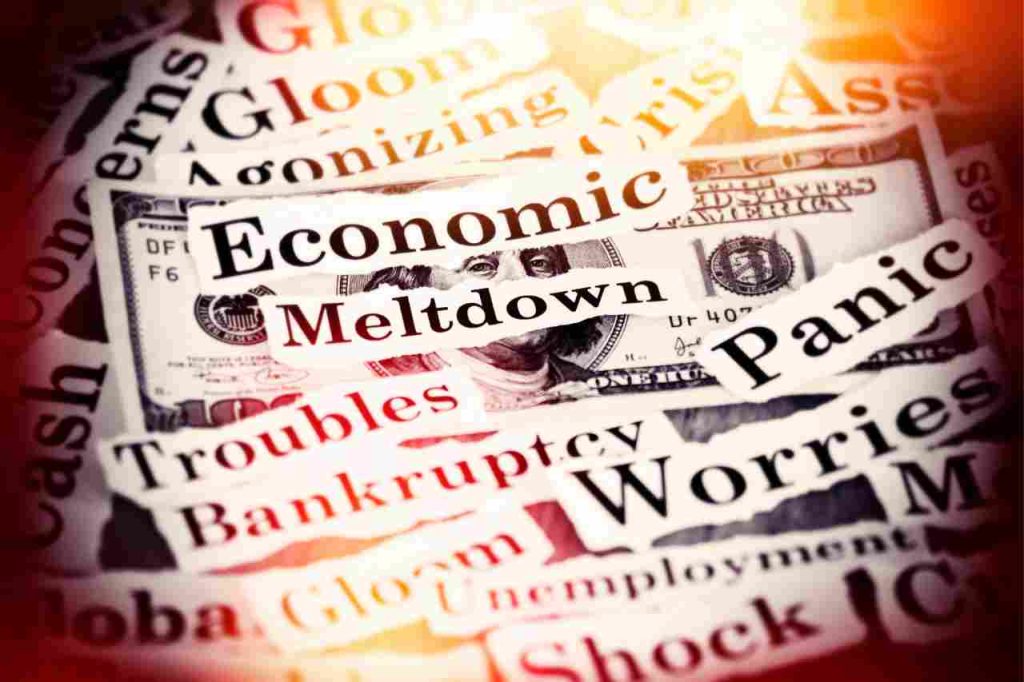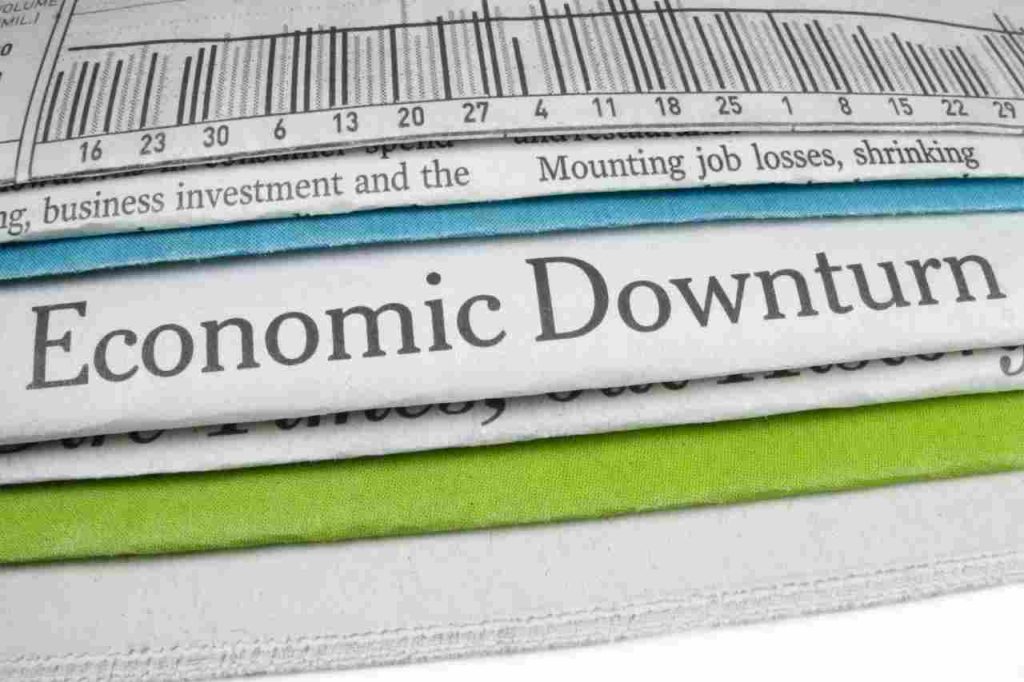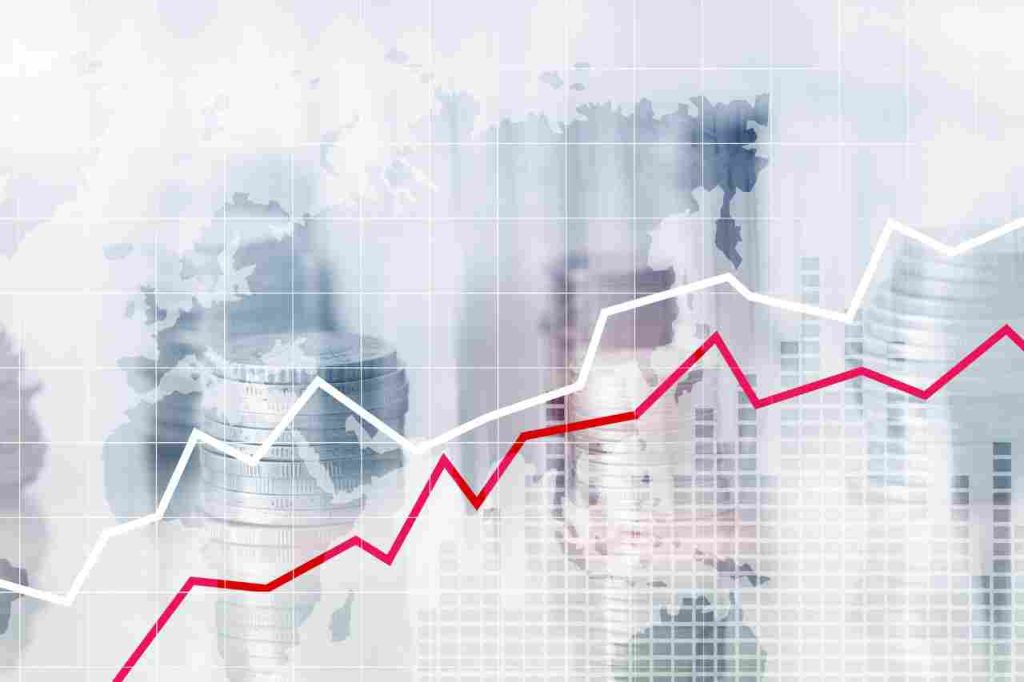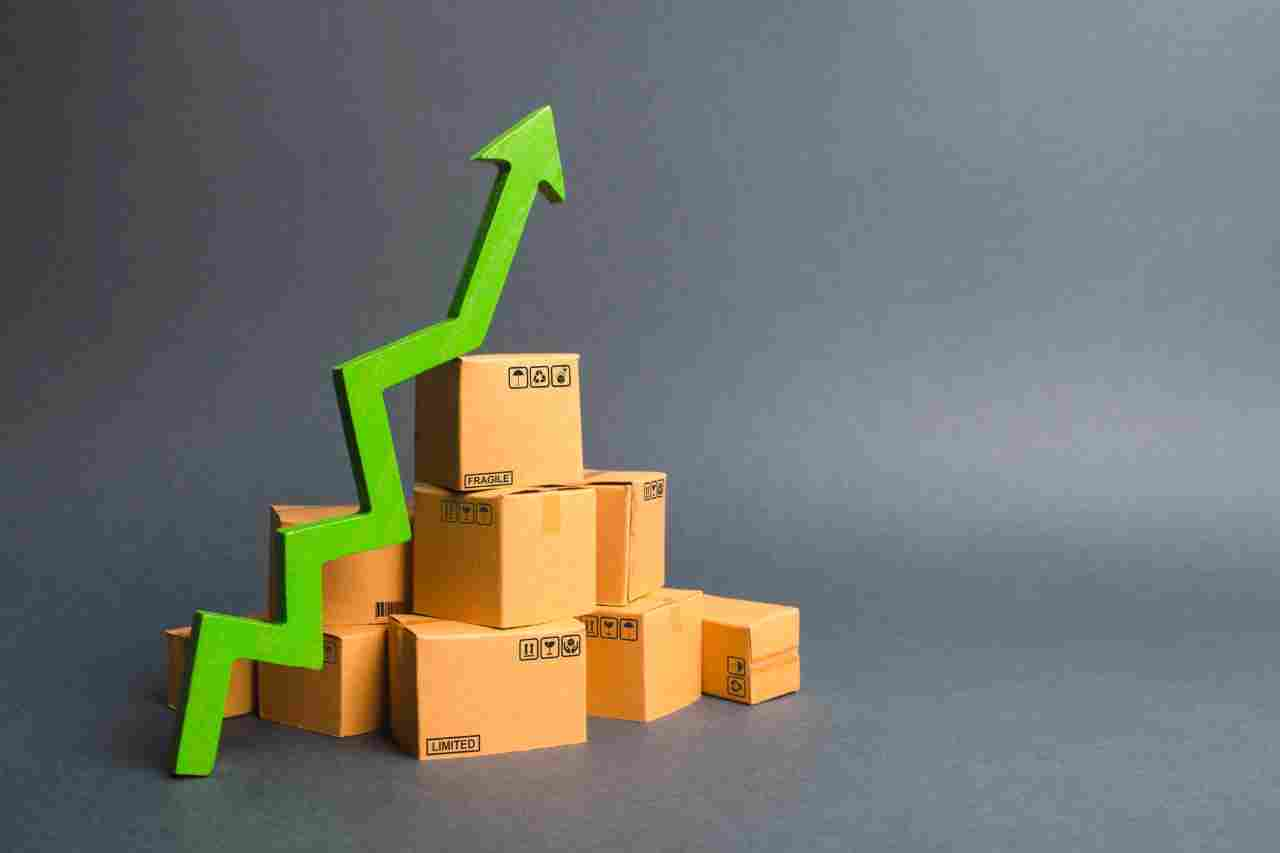Table of Contents
Economic indicators are statistical measures that reflect the health and performance of an economy.
They provide insight into various aspects of economic activity, such as production, employment, and inflation. Economic indicators are essential for investors as they can significantly impact the stock market.
Investors can reduce risk and make smarter investing choices if they understand how economic factors impact the stock market.
We will also discuss how investors can use economic indicators to make informed investment decisions and manage risks.
Key Economic Indicators
Investors can monitor the economy’s performance and gauge its influence on the stock market using a variety of economic indicators.
Here are some of the most important economic indicators to be aware of:
Gross Domestic Product (GDP)
One of the most crucial economic statistics for investors to understand is gross domestic product (GDP).
A country’s GDP is a measure of the total value of the products and services produced over a given time period, typically a quarter or a year. It serves as a gauge for a country’s overall economic development and performance.

Investors pay close attention to changes in GDP because they can impact the stock market. When the GDP grows, it usually indicates that the economy is healthy and companies generate higher revenues and profits.
This might boost investor confidence, which might raise stock prices. On the other hand, when the GDP declines, it can be a sign that the economy is in a recession and businesses are finding it difficult to make money. Stock prices may decline as a result of diminished investor confidence.
However, investors should remember that GDP alone cannot provide a complete picture of the economy’s health.
Other economic indicators, such as unemployment rates and consumer spending, should also be considered when assessing the overall health of the economy and its impact on the stock market.
Additionally, GDP growth rates can vary significantly between industries and sectors, so investors should also consider how GDP growth may affect specific stocks and sectors.
Unemployment Rate
The unemployment rate is another critical economic indicator investors should be aware of.
The fraction of the labor force that is unemployed but actively looking for work is known as the unemployment rate. It assesses the level of economic activity and the state of the labor market.
Changes in the unemployment rate can impact the stock market. When the unemployment rate is low, it usually indicates that the labor market is healthy and more people have jobs and disposable income to spend.
This can lead to increased consumer spending, higher corporate earnings, and increased investor confidence, which can drive stock prices higher.
On the other hand, a high unemployment rate might point to a sluggish labor market and a decline in disposable income.

As a result, there may be a decline in market confidence, business earnings, and consumer spending, which could result in falling stock prices.
However, investors should remember that the unemployment rate alone cannot provide a complete picture of the labor market’s health.
Other factors, such as the types of jobs being created and wage growth, should also be considered when assessing the overall health of the labor market and its impact on the stock market.
Additionally, different industries and sectors may be more or less affected by changes in the unemployment rate, so investors should also consider how unemployment rates may affect specific stocks and sectors.
Consumer Price Index (CPI)
The Consumer Price Index (CPI) is an essential economic indicator that investors should know.
The CPI measures the average price of a basket of goods and services that consumers buy, such as food, housing, and transportation. It is a measure of inflation and reflects the purchasing power of consumers.
Changes in the CPI can impact the stock market. When the CPI is increasing, it usually indicates that inflation is rising and the purchasing power of consumers is decreasing.
As a result, there may be a decline in consumer spending, company profits, and investor confidence, which could result in a decline in stock prices.
Conversely, when the CPI is decreasing, it may indicate that inflation is falling and the purchasing power of consumers is increasing.
This can lead to increased consumer spending, higher corporate earnings, and increased investor confidence, which can drive stock prices higher.
Investors should remember that the CPI alone cannot provide a complete picture of inflation’s impact on the economy and the stock market.
Other factors, such as wage growth and interest rates, should also be considered when assessing inflation’s impact on the overall health of the economy and the stock market.
Additionally, different industries and sectors may be more or less affected by changes in the CPI, so investors should also consider how CPI changes may affect specific stocks and sectors.

Producer Price Index (PPI)
The Producer Price Index (PPI) is another critical economic indicator that investors should be aware of.
The PPI calculates the average price changes that domestic manufacturers of goods and services have experienced over time. It serves as a gauge of the pressures brought on by inflation on producers..
Changes in the PPI can impact the stock market. When the PPI is increasing, it usually indicates that the cost of production is rising, and companies may need to raise prices to maintain their profit margins.
This can lead to increased inflation, decreased consumer spending, lower corporate earnings, and decreased investor confidence, which can cause stock prices to fall.
Conversely, when the PPI is decreasing, it may indicate that the cost of production is falling, and companies may be able to lower prices, which can increase consumer spending, higher corporate earnings, and increase investor confidence, driving stock prices higher.
Investors should remember that the PPI alone cannot provide a complete picture of inflation’s impact on the economy and the stock market.
Other factors, such as wage growth and interest rates, should also be considered when assessing inflation’s impact on the overall health of the economy and the stock market.
Additionally, different industries and sectors may be more or less affected by changes in the PPI, so investors should also consider how PPI changes may affect specific stocks and sectors.

In-Store Sales
Investors should be aware of the importance of retail sales as a key economic indicator. Retail sales, which include both online and in-person purchases, represent the total amount of goods and services sold in the retail industry.
Consumer spending, which makes up a large component of the total economy, is measured by retail sales.
Changes in retail sales can impact the stock market. When retail sales are increasing, it usually indicates that consumers are spending more money, which can lead to increased corporate earnings, higher investor confidence, and increased stock prices.
Conversely, when retail sales are decreasing, it may indicate that consumers are spending less money, which can lead to decreased corporate earnings, reduced investor confidence, and decreased stock prices.
Investors should keep in mind that retail sales do not accurately reflect the state of the economy or how it affects the stock market. It is important to take into account additional variables, such as GDP growth and unemployment rates.
Additionally, different industries and sectors may be more or less affected by changes in retail sales, so investors should also consider how retail sales changes may affect specific stocks and sectors.

Industrial Production
Industrial production is another important economic indicator that investors should be aware of. Industrial production measures the output of goods in the manufacturing, mining, and utilities sectors. It is a measure of the level of economic activity in these sectors.
Changes in industrial production can impact the stock market. When industrial production is increasing, it usually indicates that manufacturing and production activities are growing, which can lead to increased corporate earnings, higher investor confidence, and increased stock prices.
Conversely, when industrial production is decreasing, it may indicate that manufacturing and production activities are contracting, leading to decreased corporate earnings, reduced investor confidence, and decreased stock prices.
Investors should note that retail sales alone cannot provide a thorough picture of the economy’s health and its impact on the stock market. It is important to take into account additional variables, such as GDP growth and unemployment rates.
Other factors, such as GDP growth and unemployment rates, should also be considered when assessing the overall health of the economy and its impact on the stock market.
Additionally, different industries and sectors may be more or less affected by changes in industrial production, so investors should also consider how industrial production changes may affect specific stocks and sectors.
Interest Rates
Investors should be mindful of interest rates as a key economic indicator. In order to prevent inflation, central banks set interest rates, which are the cost of borrowing money.
Changes in interest rates can impact the stock market. When interest rates decrease, it can stimulate economic growth by making borrowing cheaper and increasing consumer spending.
This can lead to increased corporate earnings, higher investor confidence, and increased stock prices.
Investors should keep in mind that interest rates do not fully reflect the state of the economy or how it affects the stock market.
Investors should keep in mind that interest rates do not fully reflect the state of the economy or how it affects the stock market.
Other factors, such as GDP growth and inflation rates, should also be considered when assessing the overall health of the economy and its impact on the stock market.
Additionally, different industries and sectors may be more or less affected by changes in interest rates, so investors should also consider how interest rate changes may affect specific stocks and sectors.

How Economic Indicators Affect the Stock Market
Economic indicators can have a significant impact on the stock market. The stock market is influenced by various factors, including investor sentiment, company earnings reports, and global events.
However, economic indicators are significant because they provide information on the overall health of the economy, which can affect investor confidence and company performance.
For example, if a key economic indicator, such as GDP or retail sales, shows a definite and consistent upward trend, it may indicate that the economy is growing and that companies are likely to perform well.
This can increase investor confidence, higher stock demand, and boost stock prices.
Conversely, if a critical economic indicator shows a decline or stagnation, it may indicate that the economy is contracting, and companies may struggle to maintain profits.
This can lead to decreased investor confidence, lower stock demand, and reduced stock prices.
It’s important to note that economic indicators do not always have a direct impact on the stock market.
Global events, governmental policies, and investor attitude are just a few examples of the many variables that might have an impact on the relationship between economic indicators and the stock market.
Additionally, different economic indicators may impact other industries and sectors of the stock market differently.
Therefore, investors need to consider various factors when assessing the impact of economic indicators on the stock market.
How Investors Can Use Economic Indicators
Investors can use economic indicators to make informed decisions about their investments. Here are some ways that investors can use economic indicators:
Monitor the overall health of the economy
Investors can use economic indicators to monitor the economy’s development over time because they give a quick overview of its state.
By monitoring economic indicators, investors can identify trends and potential risks and adjust their investment strategies accordingly.
Identify sector-specific trends
Different industries and sectors of the stock market may be impacted differently by changes in economic indicators.

For example, a decrease in retail sales may negatively impact the consumer discretionary sector, while an increase in industrial production may positively impact the industrial sector.
Investors can use economic indicators to identify sector-specific trends and adjust their portfolios accordingly.
Assess potential risks and opportunities.
Economic indicators can signal potential risks and opportunities in the stock market. For example, if the unemployment rate is increasing, it may indicate that consumers are spending less, which can negatively impact companies in specific sectors. Investors can use this information to adjust their portfolios and avoid potential losses.
Evaluate company performance
Economic indicators can also be used to evaluate the performance of individual companies.
For example, if a company is in a sector that is heavily impacted by changes in retail sales, monitoring retail sales data can help investors assess the company’s potential for growth or decline.
Conclusion
Economic indicators play a crucial role in the stock market and provide valuable information to investors.
These indicators help investors track the overall health of the economy, identify sector-specific trends, assess potential risks and opportunities, and evaluate company performance.
While economic indicators can provide helpful information, investors should also consider other factors when making investment decisions, such as global events, company earnings reports, and investor sentiment. By using economic indicators alongside other factors, investors can make informed decisions and adjust their investment strategies as needed to achieve their goals.










